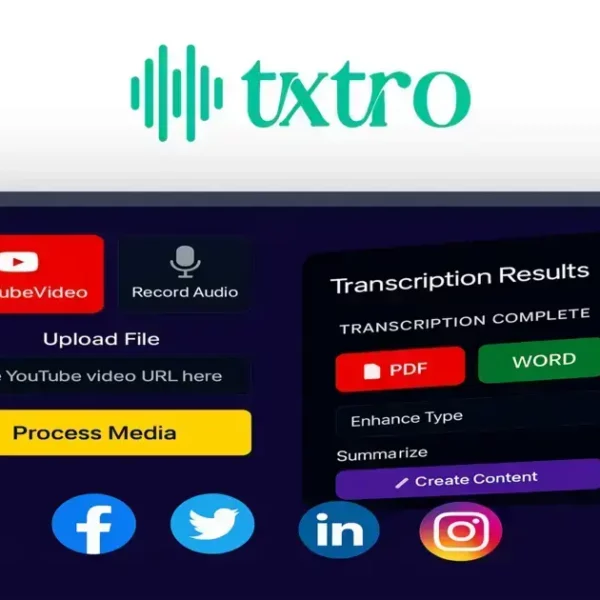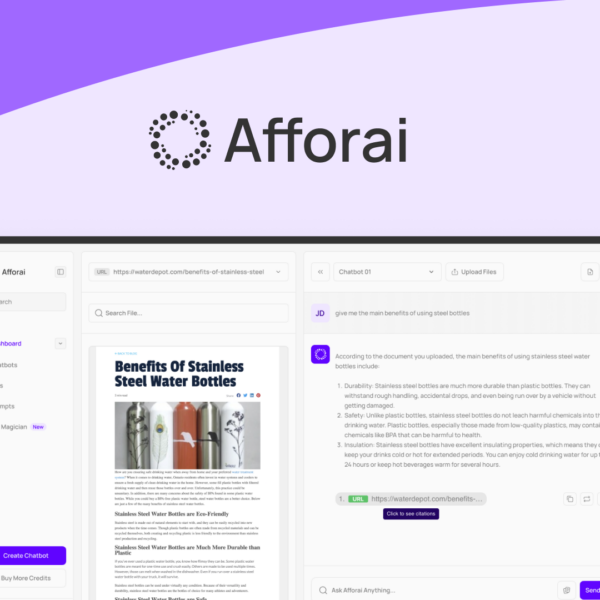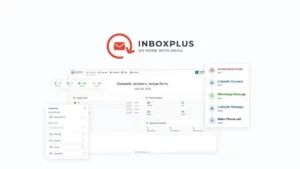Higher level software simplifies complex tasks through user-friendly interfaces and automation, enhancing productivity and collaboration in businesses. With features like cloud integration and advanced analytics, it empowers organizations to adapt and innovate for future success.
In a world increasingly dependent on technology, higher level software has emerged as a game changer. These powerful tools help streamline operations, enhance productivity, and foster innovation across various industries. In this article, we’ll delve into the essentialfeatures of higher level software, the benefits it offers, implementation strategies, and what the future holds for this cutting-edge technology.
What is Higher Level Software?
Higher level software refers to sophisticated programs designed to simplify the process of software development and enhance user experience. These applications typically abstract complex coding requirements, allowing developers to focus on creating features and enhancing functionality instead of getting bogged down by intricate technical details.
Defining Characteristics
Higher level software is characterized by its user-friendly interfaces, powerful functionalities, and the ability to integrate with various systems smoothly. It enables users to perform complex tasks without having to write extensive code, making it accessible even to those with limited programming knowledge.
Examples of Higher Level Software
Common examples of higher level software include content management systems (CMS) like WordPress, software development platforms such as Microsoft Visual Studio, and business applications like Salesforce. These tools provide users with robust capabilities while maintaining ease of use.
Importance in Development
The importance of higher level software in development cannot be overstated. It accelerates project timelines by reducing development complexities and facilitates collaboration among teams. By using these platforms, companies can innovate faster and adapt to changing market needs more efficiently.
Who Should Use Higher Level Software?
Higher level software is beneficial for a variety of users, including small business owners, software developers, and even large enterprises looking to streamline their operations. It empowers teams to bring ideas to life quickly, making it an essential tool in today’s fast-paced digital landscape.
Benefits of Utilizing Higher Level Software

The use of higher level software brings a multitude of benefits that can significantly enhance both productivity and efficiency in various business environments. By simplifying complex processes, these programs empower users to accomplish tasks more effectively.
Increased Productivity
One of the primary advantages of higher level software is its ability to boost productivity. By automating repetitive tasks, employees can focus on more important activities that require critical thinking and creativity. This shift not only helps meet deadlines but also improves overall job satisfaction.
Improved Collaboration
Higher level software often includes features that facilitate collaboration among team members. Tools that allow for easy sharing of documents, real-time editing, and communication improve teamwork, especially in remote working setups. This leads to better project outcomes and a more connected work environment.
User-Friendly Interfaces
Another vital benefit is the user-friendly interface that higher level software typically offers. These intuitive designs ensure that even individuals without extensive technical skills can navigate and utilize the software effectively. As a result, companies can save on training costs and reduce the time it takes to onboard new employees.
Flexibility and Scalability
Many higher level software solutions provide flexibility and scalability, allowing businesses to adapt the software to their changing needs. Companies can modify the software to accommodate growth or shifts in their operational focus, ensuring that the tools remain relevant as the organization evolves.
Cost Efficiency
Investing in higher level software can lead to significant cost savings in the long run. By streamlining processes and reducing the need for extensive IT support, businesses can lower operational costs. The efficiency gained often translates to increased revenue, making it a financially savvy choice.
Key Features of Higher Level Software
Higher level software comes packed with a variety of features that are designed to streamline operations and enhance user experiences. Understanding these key features can help businesses leverage these tools effectively.
Intuitive User Interfaces
Many higher level software solutions feature intuitive user interfaces that make it easy for users to navigate and utilize the software without extensive training. An attractive, easy-to-use design encourages employee adoption and ensures that they can start working productively right away.
Automation Capabilities
Automation is a cornerstone of higher level software. This feature allows businesses to automate repetitive tasks, such as data entry, scheduling, and reporting. By reducing manual work, companies can minimize human error and increase efficiency across various departments.
Integration with Other Tools
Higher level software often includes robust integration capabilities that allow it to work seamlessly with other applications already in use. This connectivity enhances workflow by allowing data to be shared easily among different systems, reducing duplication of effort and ensuring data accuracy.
Customization Options
Many higher level software options provide customization features that enable users to tailor the software to meet their specific needs. This flexibility means that businesses can modify functionalities and settings to align with their unique workflows and preferences.
Advanced Analytics and Reporting
Another significant feature is advanced analytics and reporting tools. These features enable users to generate reports, analyze data trends, and gain insights that contribute to better decision-making. With powerful analytics, companies can understand their performance, identify opportunities, and drive strategic initiatives.
Implementing Higher Level Software in Your Business

Implementing higher level software in your business can be a transformative process that enhances efficiency and productivity. However, successful implementation involves careful planning and execution to ensure that the software meets the specific needs of your organization.
Assessing Business Needs
The first step in implementing higher level software is to assess your business needs. Consider the challenges you face and the objectives you want to achieve with the new software. Identifying key areas for improvement will help you choose the right software solution that aligns with your goals.
Choosing the Right Software
Once you have a clear understanding of your needs, it’s important to research and evaluate various higher level software options. Look for software that offers the features you need, a user-friendly interface, and good customer support. Reading reviews and case studies can also provide insights into the experiences of other businesses.
Training Employees
Training your employees is essential for a successful implementation. Ensure that your team is familiar with the new software by providing hands-on training sessions and access to resources. Proper training will help reduce resistance to change and encourage staff to utilize the new tools effectively.
Pilot Testing
Before a full-scale rollout, conduct a pilot test with a small group of users. This approach allows you to identify any issues and make adjustments based on feedback. A pilot test also helps to gauge how well the software integrates with existing processes and systems.
Monitoring and Evaluation
After implementation, it’s crucial to continuously monitor and evaluate the performance of the higher level software. Collect data on its effectiveness in improving productivity and achieving business objectives. Use this information to make informed decisions about future software upgrades or changes.
Future Trends in Higher Level Software
The landscape of higher level software is continuously evolving, and staying informed about the future trends can help businesses stay competitive. Understanding these trends can provide insights into how software will shape business operations in the coming years.
Increased Use of Artificial Intelligence
One major trend is the integration of artificial intelligence (AI) into higher level software. AI capabilities allow for smarter decision-making, improved automation, and personalized user experiences. As AI technology advances, we can expect software to become even more intuitive and responsive to user needs.
Adoption of Cloud-Based Solutions
Cloud computing is transforming the way businesses use software. Higher level software is increasingly being offered as cloud-based solutions, allowing for easier access, flexibility, and scalability. This shift enables teams to collaborate from anywhere, reducing hardware costs and ensuring that software is always up to date.
Focus on Data Security
As reliance on software grows, so does the importance of data security. Future higher level software will incorporate enhanced security features to protect user data and ensure compliance with regulations. Businesses will need to prioritize software that provides robust security measures to safeguard sensitive information.
Greater Emphasis on User Experience
In the coming years, there will be a stronger focus on user experience (UX) in higher level software design. Companies will invest more in creating user-friendly interfaces and seamless interactions. A positive user experience leads to higher adoption rates and increased satisfaction among employees.
Integration with Emerging Technologies
Higher level software will increasingly integrate with emerging technologies, such as the Internet of Things (IoT) and blockchain. These integrations will enhance functionality and open up new opportunities for businesses to innovate and operate more efficiently.
Embracing Higher Level Software for the Future
Higher level software offers many advantages that can enhance your business operations. By streamlining processes, improving collaboration, and providing user-friendly interfaces, these tools empower teams to be more productive.
As we look to the future, trends such as AI integration, cloud solutions, and a focus on data security will shape how we use software. Staying informed about these changes is essential for businesses aiming to thrive in the digital landscape.
By adopting higher level software and embracing new technologies, your business can unlock new opportunities and pave the way for long-term success. Don’t miss out on the potential to innovate and grow!
FAQ – Frequently Asked Questions about Higher Level Software
What is higher level software?
Higher level software refers to user-friendly applications designed to simplify complex processes, enable automation, and enhance productivity.
How can higher level software benefit my business?
By streamlining operations, improving collaboration, and reducing the time spent on repetitive tasks, higher level software can significantly boost your business’s efficiency.
What are some key features of higher level software?
Key features include intuitive user interfaces, automation capabilities, integration with other tools, customization options, and advanced analytics.
How do I implement higher level software in my organization?
Start by assessing your business needs, choose the right software, provide training for employees, conduct pilot testing, and monitor performance after implementation.
What future trends should I watch for in higher level software?
Future trends include increased AI integration, more cloud-based solutions, enhanced data security, a focus on user experience, and integrations with emerging technologies.
Is higher level software suitable for small businesses?
Yes, higher level software is designed to be accessible and beneficial for businesses of all sizes, including small startups.




